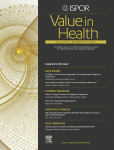Childhood chromium exposure and neuropsychological development in children living in two polluted areas in southern Spain
This study aimed to assess the association between exposure to chromium and neuropsychological development among children. A cross-sectional study was conducted with 393 children aged 6–11 years old randomly selected from State-funded schools in two provinces in Southern Spain (Almeria and Huelva), in 2010 and 2012. Chromium levels in urine and hair samples were analyzed…












